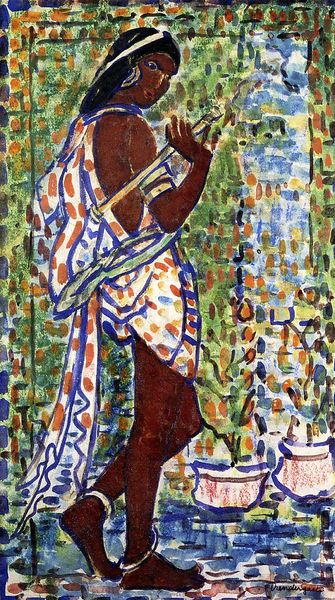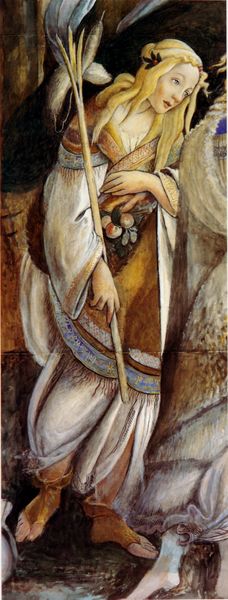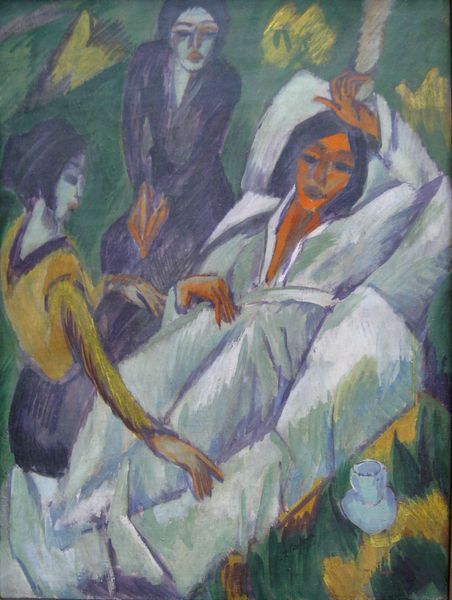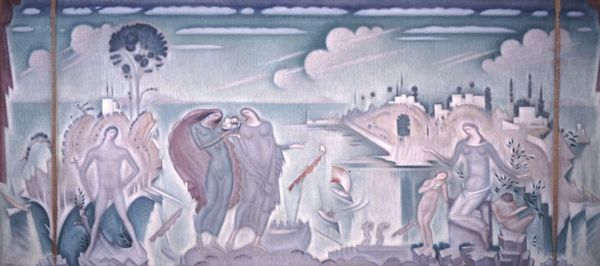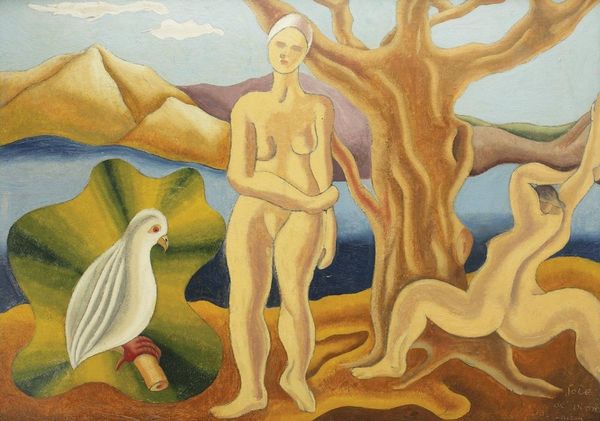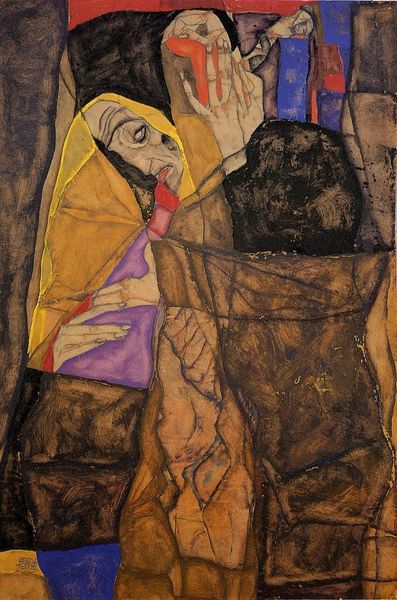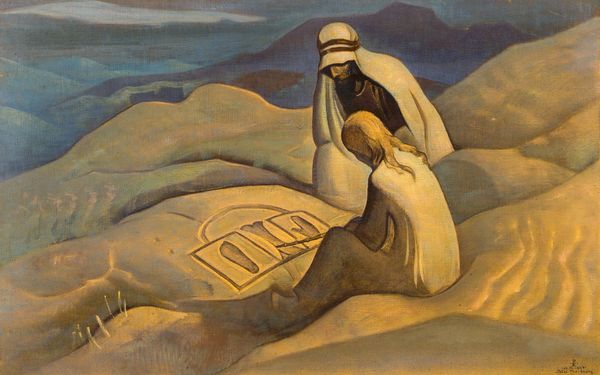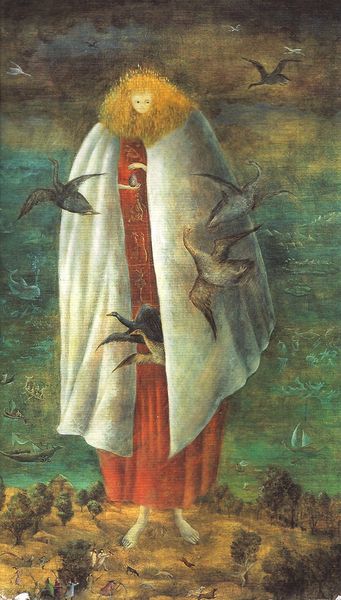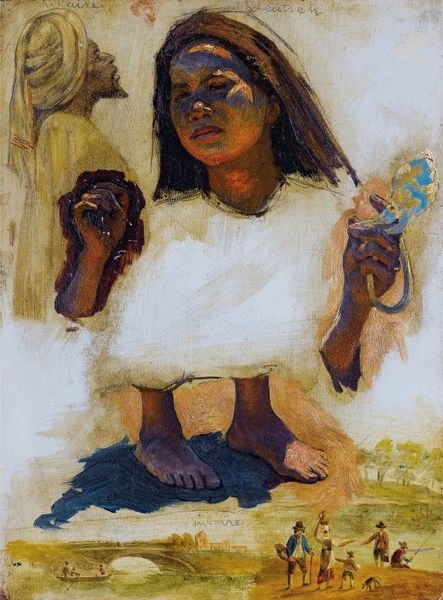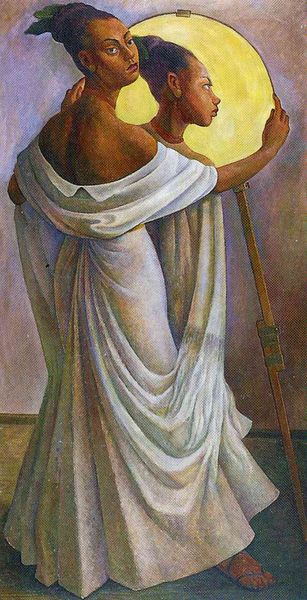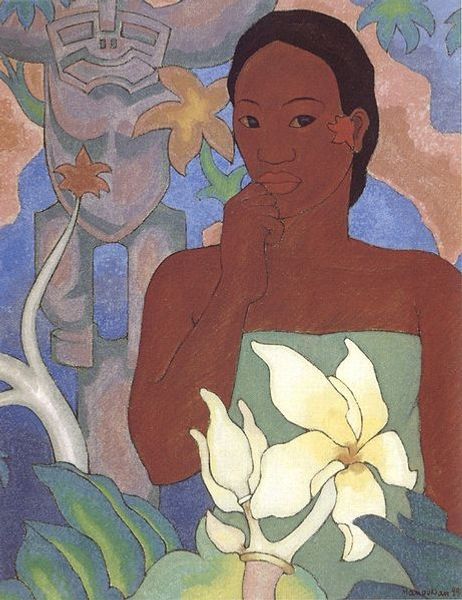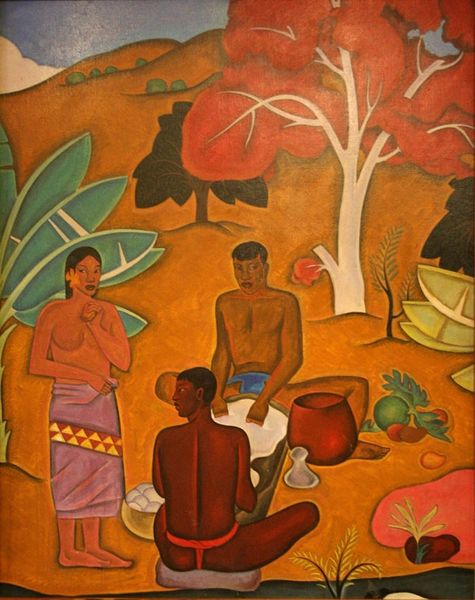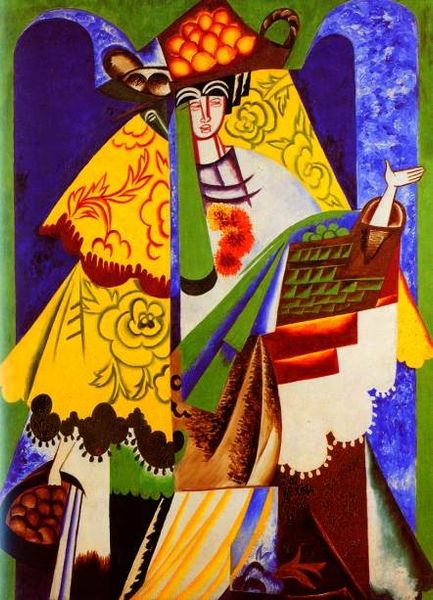
painting, oil-paint
#
portrait
#
painting
#
canvas painting
#
oil-paint
#
figuration
#
naive art
#
painting art
Copyright: Public domain
Arman Manookian painted "Shaman" in the early 20th century, when the romanticized vision of island life, particularly in Hawaii, was in vogue. Manookian's depiction of a native shaman diverges from traditional representations, as the figure is given a place of prominence and respect. Emerging from a deeply lush, almost surreal landscape, the figure stands in stark contrast to the European settlers. The white robe symbolizes a purity of purpose and a connection to the spiritual realm. Manookian himself lived a troubled life, deeply affected by cultural displacement and personal struggles. His identity as an Armenian artist navigating the art world in Hawaii adds layers of complexity to his work. In his own words, he sought to capture the "soul of the islands," a sentiment laden with both appreciation and a sense of alienation. This painting serves as a poignant reminder of the often-overlooked narratives of indigenous spirituality, filtered through the experiences of a diasporic artist. "Shaman" invites us to reflect on themes of cultural identity, the search for belonging, and the power of art to evoke a sense of place.
Comments
No comments
Be the first to comment and join the conversation on the ultimate creative platform.
